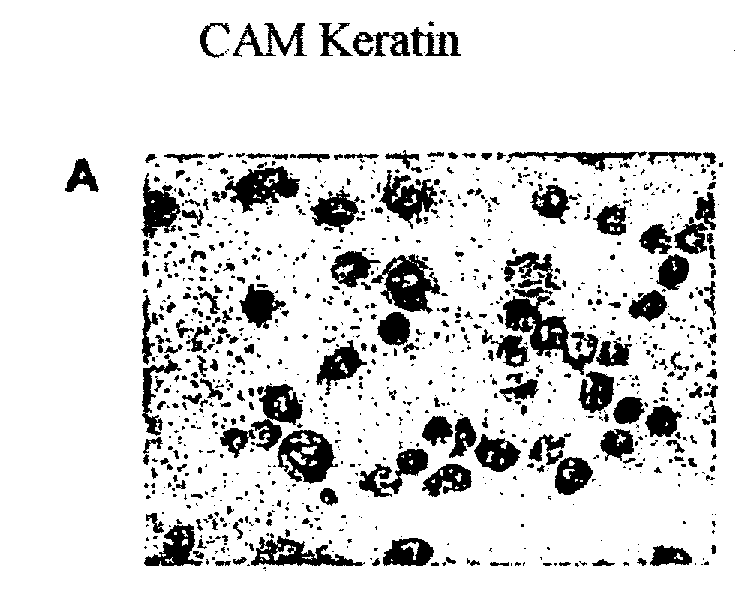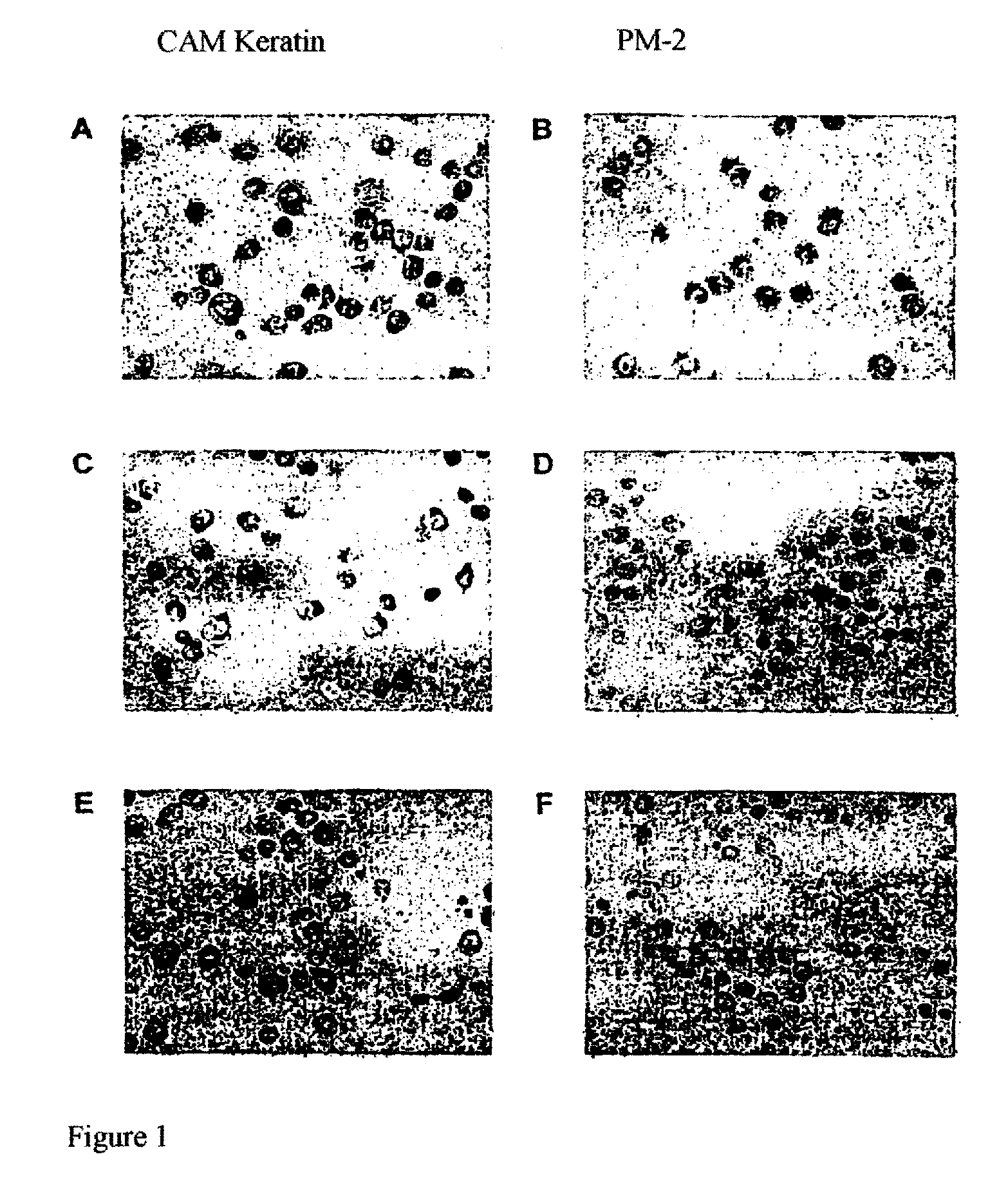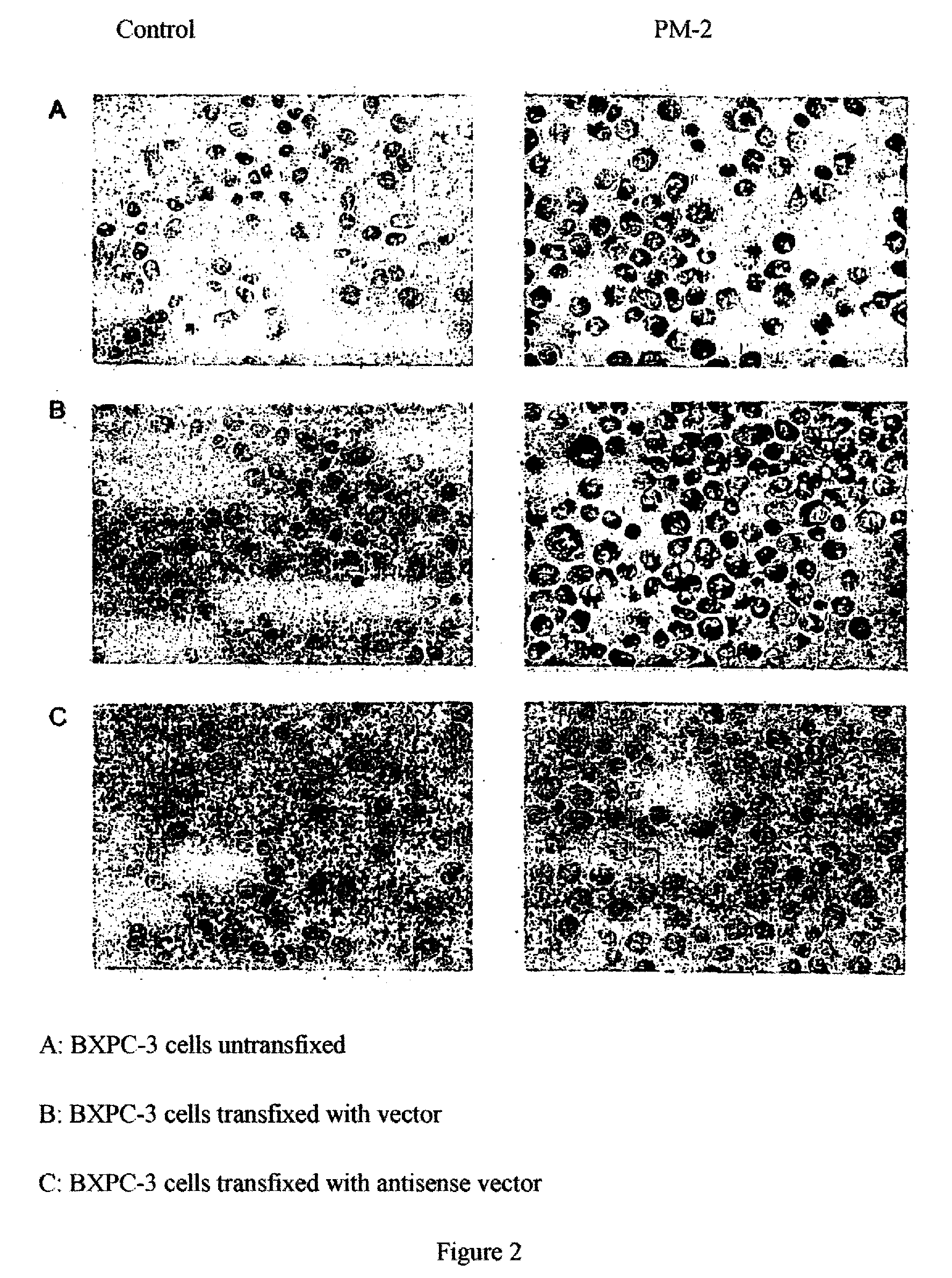Antigen of the Pm-2 Antibody and Use Thereof
a technology of pm2 antibody and antigen, which is applied in the preparation of animals/human proteins, animal/human proteins, peptide preparation methods, etc., can solve the problems of liver damage and unsuitable cancer therapy
- Summary
- Abstract
- Description
- Claims
- Application Information
AI Technical Summary
Problems solved by technology
Method used
Image
Examples
example 2
Result of Glycosidase—Digestion
[0062]FIG. 1 shows the influence of glycosidase digestion on the antibody binding of PM-2 to the cell surface of the pancreas carcinoma cells BXPC-3. After digestion, the cytospins were immunohistochemically stained with the positive control CAM Keratin (A, C, E) and with PM-2 (B, D, F).
[0063]Figures A and B in FIG. 1 show the controls after incubation of the cells in glycosidase buffer without enzyme. Figures C and D show the effects of N-glycosidase incubation on the binding of the antibody PM-2 to the pancreas carcinoma cells. After digestion with the enzyme N-glycosidase can no longer be stained with the antibody PM-2. This means that the antibody can no longer bind to its receptor, because the bound glycostructure necessary for the specific binding was cleaved off during N-glycosidase digestion.
[0064]The figures in FIG. 1 E and F show the effects of O-glycosidase incubation on the binding of the antibody PM-2. While the positive control, CAM kerat...
example 3
Result of Western Blot
[0068]FIG. 3 shows the immunospecific evidence of the antigen expressed in BXPC-3 cells and in 23132 / 87 cells with the aid of the PM-2 antibody.
example 4
Determination of the N-Glycosilation Sites
[0069]The glycosilyation sites indicated in FIGS. 4a and 4b and 5a and 5b were determined with the aid of the software of the database of the “UK MRC Human Genome Mapping Project” (http: / / www.hgmp.mrc.ac.uk / GenomeWeb / protanal.html).
PUM
| Property | Measurement | Unit |
|---|---|---|
| molecular weight | aaaaa | aaaaa |
| pH | aaaaa | aaaaa |
| pH | aaaaa | aaaaa |
Abstract
Description
Claims
Application Information
 Login to View More
Login to View More - R&D
- Intellectual Property
- Life Sciences
- Materials
- Tech Scout
- Unparalleled Data Quality
- Higher Quality Content
- 60% Fewer Hallucinations
Browse by: Latest US Patents, China's latest patents, Technical Efficacy Thesaurus, Application Domain, Technology Topic, Popular Technical Reports.
© 2025 PatSnap. All rights reserved.Legal|Privacy policy|Modern Slavery Act Transparency Statement|Sitemap|About US| Contact US: help@patsnap.com



